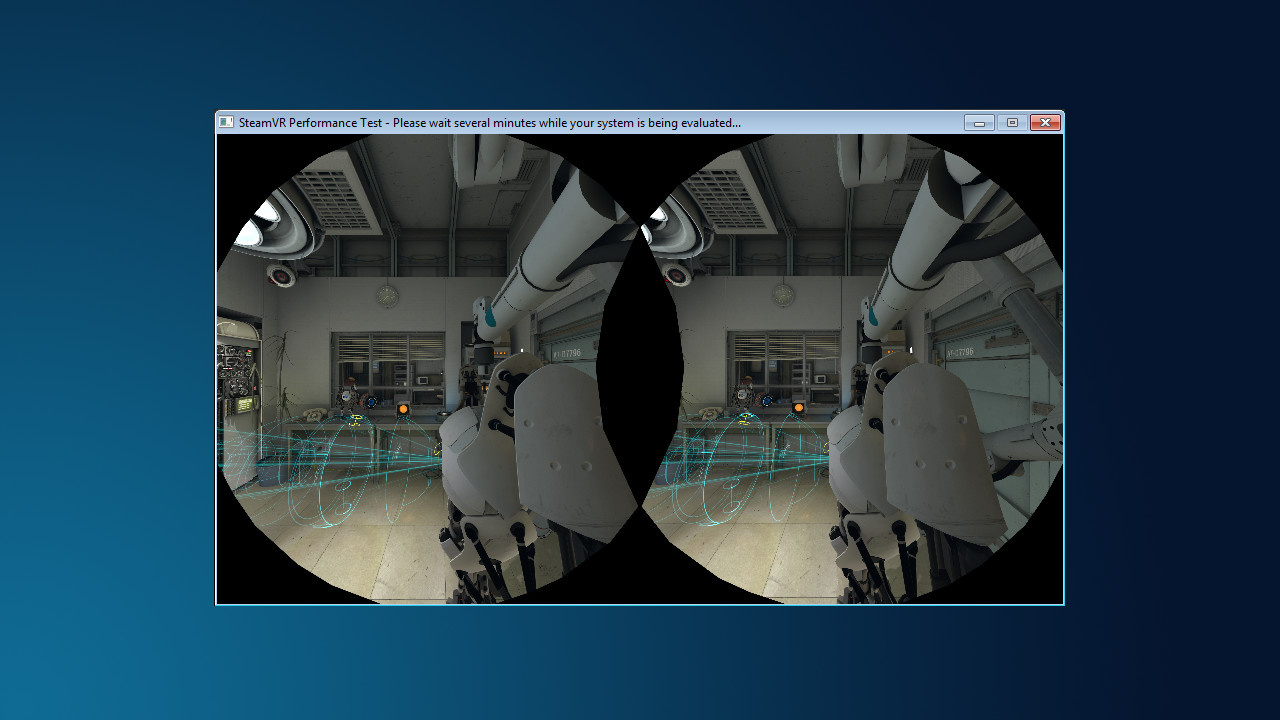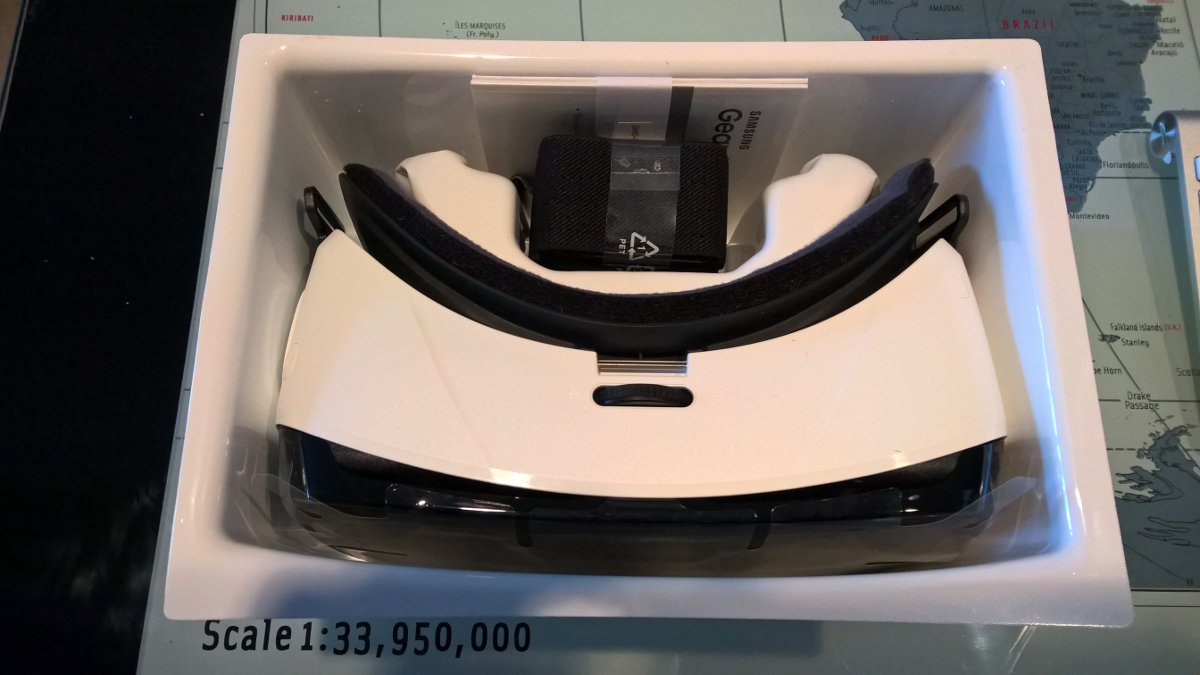Finally!

It seems like I’ve been waiting forever.
I received an email from HTC telling me my Vive order is being processed! Hooray! At last, I can escape this infernal earth (which isn’t a band name, but it should be) and spend my time working a boring corporate job.
Here’s what I received:
I’ve never ordered something that comes with an ‘Alternate Face Cushion.’ UPDATE: I learned after making this post that the email I received was sent to everyone who ordered one, and does not, according to a Vive post on Twitter, indicate anything about the shipping date.
I eagerly clicked on “look up your order online,” anticipating seeing the HTC elves furiously building my machine, however it took me to page in which I could do a ‘quick lookup’ using my email address and the last 5 digits of my credit card number, or my order number and a password.
The thing is, I didn’t recall receiving a confirmation email when I first ordered, no order number or anything, and I had no idea what password they’re referring to.
So I entered my email address and digits of my CC#, and it said ‘Incorrect order # or Password,’ which is weird because I entered neither of those things. I tried again. And again, and again. Nothing worked. It said I could reset my Order Password, but I would need my order number to do that, and I don’t believe I have a password anyway!
UPDATE: After some searching around, it turns out they *did* send me a confirmation email that didn’t come up when I searched my inbox. I had to go through my messages one by one, and it was an email that wouldn’t convert to HTML. So I had to scan through a bunch of HTML and CSS to discover my order number and password (which they sent in the email), and finally got to the status page. it didn’t tell me a whole lot.
What *is* interesting is the statement that they will start shipping in April, and the estimated arrival will be based on the date the shipping notification is received. What it doesn’t say is that those who ordered early should receive them early, and I ordered it the second they became available to do so. Daniel O’Brien, HTC’s VP of VR, clarified on Twitter that April 5th is the day they will start arriving to consumers, not the day they’ll start shipping. I also read that some people received emails specifying orders will start shipping in May, not April, which would indicate they are being very particular about order order. You know what I mean.
In other words, on April 5th or thereabouts (it better be thereabouts, dammit), I’m going to take the next 97 days off. You heard me.
Whenever it arrives, I’ll put up a full unboxing and setup soon after.
Conquering some Psychonauts of my own.

(Crossposted to theexperiencebar.com)
Now here’s a story for you. I was cleaning up my desktop the other day, removing all the now-unnecessary detritus that piles up over the span of a few months – in this case an academic quarter – in the form of icons, folders, file fragments, installers, you know the sort of thing, when I discovered a folder filled with screenshots simply titled ‘Psychonauts.’
It took me a minute to remember why this folder was here, and then I recalled that I had purchased it during a Steam sale, adding it to the 150+ backlog I already had, but this was no ordinary purchase, and this was no ordinary game. It was a test.
I know what you’re thinking: “Uh, Psychonauts was released in 2005. On the Original Xbox. You’re just getting around to it now?” Well, yes and no. You see, completing it wasn’t just a game achievement for me, but a personal one as well. I’ll address that in a moment.
Want to animate the next Futurama?

Now you can!
According to a press release, Toonz, the software used to animate Futurama as well as the highly-regarded Princess Mononoke and one of my favorites, the animation masterpiece Howl’s Moving Castle, will be made open source and free at an announcement during the Anime Japan expo this week. It is a full-featured animation package, that allows for digital animation, or the scanning and animating of paper drawings. That’s what lends to the hand-drawn nature of many of Studio Ghibli’s films, who animated the latter two films I mentioned.
This isn’t the first time this has happened, remember. Renderman, Pixar’s animation software used in all their movies, was made free for non-commercial use a little over a year ago. If you’ve ever wanted to see what goes into this kind of animation, or try your hand at it yourself (it’s not for the faint of heart), then now’s your chance!
R.I.P Ray Tomlinson

I have been so busy lately it’s hard to put into words, however I had to take some time to acknowledge the passing of Ray Tomlinson. That may not be one of the most famous names in computing history, but his invention certainly is.
Ray is the inventor of email, and the nomenclature including the ‘@’ sign to indicate the system on which the message was to be delivered. It’s a shame more don’t know his name, considering how profound his impact on computing was – not just for computery-y types back in 1971 when he first developed the thing, but for every single individual on the planet as the years went on. So important was it, that he was inducted into the Internet Hall of Fame in 2012.
He was the stereotypical engineer, very pragmatic and matter-of-fact when he spoke, however back in the very early seventies that’s the kind of person that made these incredible contributions. His developments set the tone for electronic communication for decades.
Although the use of email is on the decline and incline at the same time, it is still an entrenched, foundational component of what made the Internet the revolutionary, culture-changing thing it is. I mean, teens don’t use it, but that’s probably for the best.
Bam!

It’s finally happening! Vive Preorders will start on Feb. 29, and I’ll be there even though ordering one will force me to give up luxuries like food and shelter for a few months. It will be worth it, I’m sure, however one of the lingering issues many people are facing is whether their PC will be powerful enough to drive the hardware for a compelling experience.
That’s a valid question, with HTC themselves providing some recommendations for VR-ready PCs. I have a PC, though, one I almost bankrupted myself to build, so needless to say I was crossing my fingers it would be enough.
Thoughtfully, Valve released a test via Steam that determines if your PC is VR ready. I downloaded it, it ran a neat – if two-screened – version of the Aperture Labs demo from when I tried the Vive back in November, and gave me my results.
VR, here I come!
If you’re interested, here’s what the demo looked like while running (Screenshot taken from Steam store page, although it looked exactly the same on my machine).
What just happened?

In case you haven’t heard, there are competitions to see who can solve a Rubik’s Cube the fastest. It’s called cubing. And there are sites where you can learn about it and pick up new techniques (such as the Fridrich Method) and advice, such as the importance of keeping your cube lubricated. Seriously. There’s even official Rubik’s Lube. The people who do it refer to themselves as cubers, and the activity of solving a Rubik’s Cube as cubing. And they are fast. Very fast, with some solving it in under five seconds.
There’s even a World Cube Association and they have regulations on how a cube must be scrambled.
Why am I bringing this up? Because as is or will be the case with everything eventually, they were all just bested by a robot. A robot that can solve a Rubik’s Cube so fast the eye can barely register it. In under one second, .887 seconds to be exact, the cube is turned from a random mishmash of colors to a thing of six-sided, solid color beauty.
It was done using an interesting process, in which two open-shutter cameras took a picture of three sides of the cube, an algorithm on a connected laptop worked out the solution, then passed that solution to an Arduino controller that executed the previously-determined solution. It did this by anchoring the center square of each side with an arm, while also using that arm to spin its respective side. It sounds far better if I just paste the description from the YouTube page:
Prior to the world record attempt a WCA-conform modified speed cube was scrambled with a computer generated random array and positioned in the robot. Once the start button was hit two webcam shutters were moved away. Thereafter a laptop took two pictures, each picture showing three sides of the cube. Then the laptop identified all colors of the cube and calculated a solution with Tomas Rokicki’s extremely fast implementation of Herbert Kociemba’s Two-Phase-Algorithm. The solution was handed over to an Arduino-compatible microcontroller board that orchestrated the 20 moves of six high performance steppers. Only 887 milliseconds after the start button had been hit Sub1 broke a historic barrier and finished the last move in new world record time.
What’s truly amazing is that because it still utilized a multi-step process that handed off functionality two separate times, the time could still be significantly reduced! Watch the video, then watch it again because you’ll miss the actual solving-the-Rubik’s-Cube part. It’s quite incredible.
I don’t know why I bother

SplashData has, as they are wont to annually do, released their list of the worst passwords of 2015. Definitely look at the link, there’s lot of additional information there regarding how dumb we are when it comes to this. Want to take a guess which terrible password takes the top spot? That’s right, 123456. Anyone suprised? Anyone? No? Frankly, if that’s your password, you deserve whatever happens. Not to be all alone, other number-based passwords made the list as well, including 12345678 and 123456789. Other idiotic passwords include qwertyuiop, login, and passw0rd. That last one is especially offensive, as though the person thinks they are pulling a fast one by having a zero instead of an o. They’re in for an unpleasant surprise.
I used a different header image than I originally had intended, one that showed the bad passwords from 2014. They’re generally the same as last year, but I ended up not going with it because it was redundant considering the list below, but the original version of this post still referenced it. So I made a fun edit, and instead I found the Facebook post used in the header which – although I sincerely hope it’s fake – really very much hope that it is fake – shows how gullible people can be. If it’s real, I wouldn’t at all be surprised. Now hold on while I allow a Nigerian prince access to my bank account.
There are some passwords on the list that are less offensive, as though the person tried, including dragon and starwars, but geez oh man, at least throw a capital letter or exclamation point or something in there, even the passw0rd people up above did that. If you really need to make a strong password, remember a sequence of at least four random words is the best alternative, and hopefully one day passwords will go the way of the dinosaurs and disco (although I do love disco), and we can switch to things like biometrics full time. Here’s the full list, pasted from Cnet:
1 – 123456 (unchanged from 2014)
2 – password (unchanged)
3 – 12345678 (up 1)
4 – qwerty (up 1)
5 – 12345 (down 2)
6 – 123456789 (unchanged)
7 – football (up 3)
8 – 1234 (down 1)
9 – 1234567 (up 2)
10 – baseball (down 2)
11 – welcome (new)
12 – 1234567890 (new)
13 – abc123 (up 1)
14 – 111111 (up 1)
15 – 1qaz2wsx (new)
16 – dragon (down 7)
17 – master (up 2)
18 – monkey (down 6)
19 – letmein (down 6)
20 – login (new)
21 – princess (new)
22 – qwertyuiop (new)
23 – solo (new)
24 – passw0rd (new)
25 – starwars (new)
Incidentally, if you think you have a pretty robust password, and want to test if you really have the goods, you can go to howsecureismypassword.net and see. The site is legitimate, I promise, it’s not stealing your credentials or anything like that, and it will show you how strong your password really is. Here’s mine – I’ve got the process down.
Marvin Minsky, the midpoint between man and machine, passes away

I can’t help but notice there are a lot of “M’s” in that sentence. I notice things like that, and things like why I prefer certain types of food, or music, or cars, or houses, or movies, or why I use certain phrases, or why I find myself using the very same phrases my dad uses, or why I tend to be very animated with my hands like my uncle, or what I find humorous or sad or strange…I think about those things because they are what make me human, and because they can differ so much from others.
Machines don’t do any of that, at least they didn’t in times past, however today things are different. Now, machines can learn, pseudo-empathize, adapt to environments, however as is often the case, while we barrel forward in the search for what is pseudo-oxymoronically referred to as artificial intelligence, with exploding research in deep learning and neural networks, and apparently no one questioning whether we should, we forget how we got to this point and what the true challenges are that lay ahead.
But some knew.
Today, Marvin Minsky has passed away, and like so many other pioneers his name is not one known to the general public, but he was, for all intents and purposes, the originator of the idea of artificial intelligence. Not the first, mind you, but the one who really started the field forward. He was a great futurist thinker like Carl Sagan and Isaac Asimov, however he focused his background in mathematics into the development of neural networks and artificial intelligence. He founded MIT’s Computer Science and Artificial Intelligence Laboratory (CSAIL) and all the way back in 1952 developed what may very well be the first automated machine capable of learning, the SNARC (using vacuum tubes, no less, the only way it could be done at the time).
Like Ada Lovelace, Charles Babbage, Grace Hopper, Alan Turing, and the many other pioneers in the fields of computer science and technology, Marvin Minsky is one of the originals who saw where it was and where it could be, and helped get it there. Sad that right as we are beginning to see exponential leaps in AI development he passes away, but he lived a long, rewarding, accomplished life, and he clearly saw where the future was heading, just as he did back in the 1940s.
In fact, it occurred to me that there was no way I could sum his lifetime of accomplishments and contributions in this one post, and it’s pretty clear I ended up just throwing it together haphazardly. I encourage you, therefore, to visit his obituary page on CSAIL’s site, and you will see how important, influential and forward thinking he was.
The Ogre-Faced spider of drones

As many of you know, I considered going to grad school for biology, specifically because I wanted to investigate the cognitive capabilities of spiders. I believed there were certain species of spider that had the genuine ability to think and plan out strategy, and although I decided to pursue another path, I would also like to note that I have since been proven right. I knew it all along. Not all of them have the ability to think, of course, in fact I frequently use the example of a black widow and her behavior to illustrate concepts in artificial intelligence, specifically to define what is and isn’t intelligence.
So if you take a look at the lovely lady in the header image, you’ll see a spider that is unique in many ways, not the least of which is that it has two different and distinct colloquial names – one based on her appearance, and one based on her behavior. That’s unusual in the insect kingdom (which isn’t really a kingdom in the biological sense, but you know what I mean). Her first name is the ogre-faced spider, for reasons I think are pretty obvious. Her other name, however, is the one we’re concerned with and it describes not just her behavior but what I believe is at least a low-level ability to cognate: the net-casting spider.
That’s right! This spider makes a net, waits for some unsuspecting bug to mosey underneath, then not only traps the bug in the net, but will expand the net to fit the bug if necessary, or in some cases allow the bug to pass if she feels it will put up too much of a fight. And people say spiders can’t think. Or maybe they don’t say that, but if they do, they shouldn’t.
So why all the talk of spiders that can do the thinky thinky? Well, besides the fact that I use spider cognition – insomuch as it is – to explain artificial intelligence concepts, the netcasting spider is also the first thing I thought of when I saw this post over at Engadget: It turns out students at Michigan Tech are developing a drone that, just like the netcasting spider, can throw out a net to catch other drones in midair! How badass is that? Here’s the gif, borrowed from Engadget’s post:
The designers call it ‘Robotic Falconry,’ which makes perfect sense if you’ve ever seen a falcon hunt; they often pluck their prey, if it’s a bird, out of midair. The rogue drone, as it were, is similarly plucked right out of the air via net and hauled away, helpless, to someplace for…well, I’ll say tea and cake, but more likely disassembly.
I like this idea. It seems a less-lethal way of dealing with a rogue drone. If you think that perhaps this is addressing an issue that isn’t a real problem, you might want to read this post from Ars Technica. We don’t want to see anyone get hurt, and this guy was ready to do it. There’s a fascinating follow-up to that whole thing as well that could set law and policy about drones and would necessarily be very wide-ranging, covering ownership, privacy, property, and how all these things interact and overlap where drones are concerned. Additionally, as Engadget’s post also points out, Japan is testing a net-casting drone because shooting them down could be harmful if they are loaded with a dangerous substance, a problem they’ve already had to deal with.
This could all be focused into something productive, though. What we REALLY need is some kind of gladiatorial drone-combat sport thing – that would be fun to watch. Just like the BattleBots competitions they have, drone wars could become a real thing. A real, exciting thing. Drones with nets, drones with lasers, drones that shoot flames and crash into each other. I’d watch that.
A tiny (but expensive) jump into VR

As all my readers know, I am a die-hard proponent of the upcoming VR revolution, and it will be glorious. I thought I could wait for the full-fledged headsets releasing later this year, however after a presentation by a VR company that is partnering with a course I’m teaching, and a demonstration of the latest GearVR headset, I took the plunge.
I went to best buy, got a Samsung Galaxy S and a GearVR, and brought them home. What I had experienced with them already was a fascinating look at current consumer grade VR technology, so I thought it was time to invest, take the plunge, and start experimenting with it on my own.
The process was interesting. First, the phone had to charge, and even with it’s Quick Charge technology it still took about 30 minutes. then, getting the plastic carrier out of the Gear VR box was tough, as it was caught on something. I was worried I would destroy the box or the plastic thing to get it out, but somehow I managed with minimal destruction. It did require carefully manipulating it at both ends of the box, and gentle finagling to finally set it free.


















